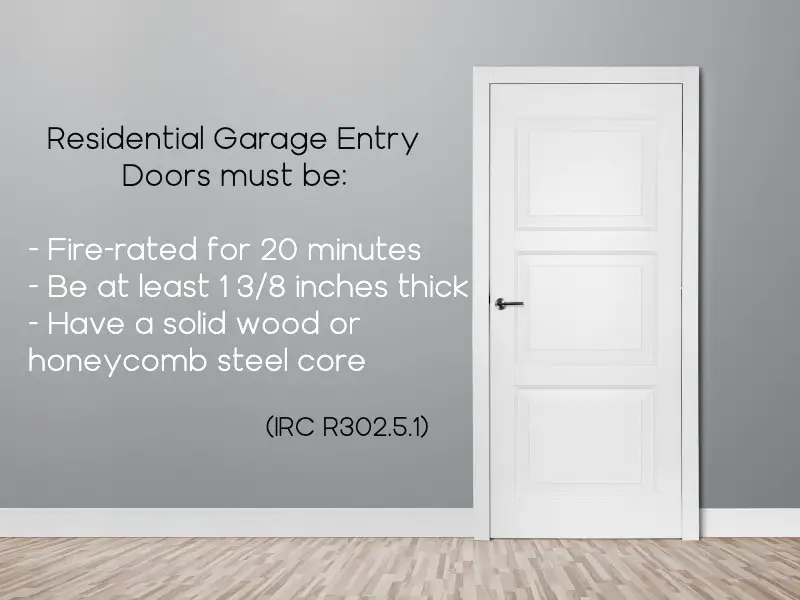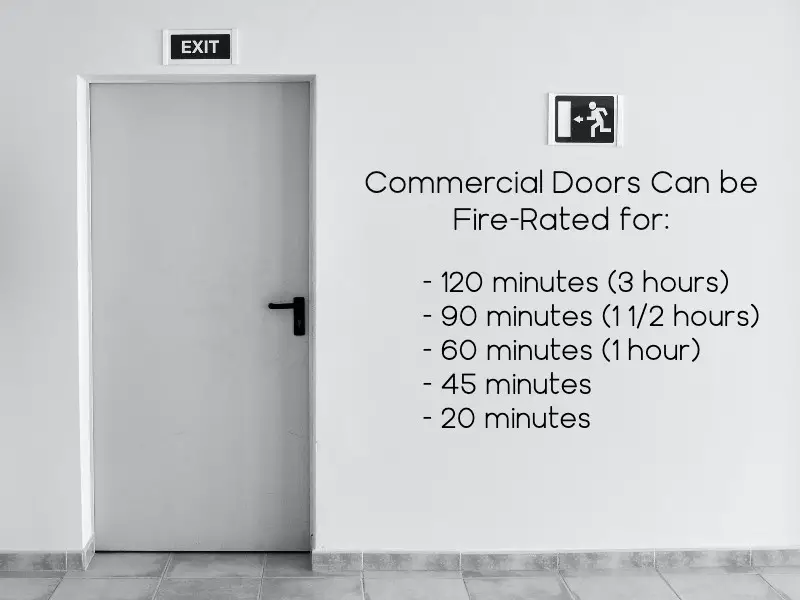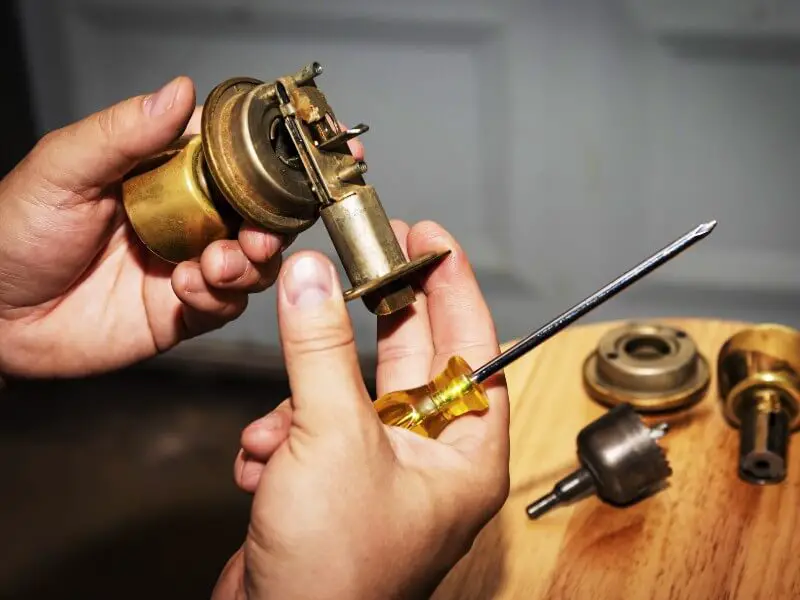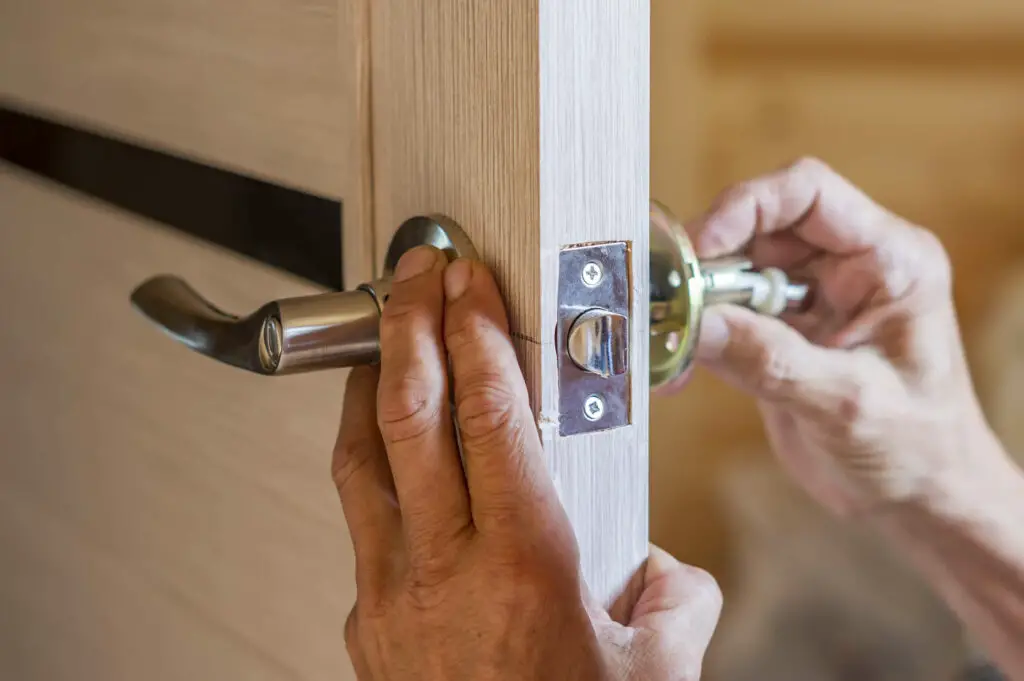Housefires can be immensely destructive and even fatal. Most people go to great lengths to ensure that the inside of their home is protected by installing fire alarms, mapping emergency exits, and making sure that their kitchens are safe and up to date. A critical room that many people overlook, however, is the garage.
In other articles on our site, we discuss garage cleanliness and organization. These things are key to preventing the spread of fire and can give a general peace of mind about the place you park your cars at night. For now, though we will be talking about a very key piece of fire deterrent that can help protect the rest of your house if the electrical were to go haywire: the garage entry door.
In the case of a fire, the garage entry door is a crucial barrier for keeping fires and fumes from entering the living space of your house. Ensuring that this point of contact is in compliance with current local and international building codes can be a lifesaving measure.
Garage entry doors can most effectively delay fire transfer from an attached garage to a house if they are fire-rated, are self-closing, have properly latching door handles, any glass is also fire-rated, the seals around the joints are tight, and there are no added holes, such as pet doors.
As time has gone on, building codes have adapted to make our living structures safer. While this information is available, it isn’t always something the average homeowner seeks out when making improvements to an older home or moving into a new one. Home inspectors often catch things that are built incorrectly or that are out-of-date when you are buying or selling. But, the move to actually make the change can be discretionary and doesn’t always hinder a sale.
So, homeowners, the responsibility falls to you. How can you prevent a tragedy by updating your garage entry door? What kind of barrier should be put between the garage and the rest of the house? Here are some essential things to look into to protect your home and the people in it.
1. Garage entry doors need to be fire-resistant or fire-rated.
To be in compliance with International Residential Code (IRC) code, fire-rated garage entry doors need to be 1 3/8″ thick with solid wood core or honeycomb steel core or have an Underwriters Laboratories fire rating (“UL Listing”) of 20 minutes. There are a few different types of fire-resistant and fire-rated doors, but the end goal is the same.
The way these types of doors are constructed adds a barrier of protection between the spark in the garage and the rest of the house. Basically, a little extra time is on your side, simply by ensuring the door itself is up to code. Most garage entry doors are rated as “20-minute” doors – that is, the door will keep the fire from burning completely through it for 20 minutes.
There are commercial options with higher minute ratings, but you will need to determine the right fit for your home. A commercial steel door is unlikely to match the other doors in your home. But there are steel door options for residential houses that have the aesthetic to match the other doors already in your home.
2. Garage entry doors should be “self-closing.”
When you think of a self-closing door, you may picture the large metal apparatus that sits on the top of heavy doors in stairwells or school cafeterias. While these get the job done, there are more subtle (and attractive) ways to have a self-closing door that leads to the inside of your home.
Spring-loaded hinges prevent the door from remaining open and can automatically close the door behind you when you enter from the garage. These hinges come in a variety of sizes and colors, ensuring that they will fit your entry door correctly and will also match the rest of the hinges in your home. When your hands are full, or you have been moving back and forth between the garage and the hallway, it can be hard to remember to close the door that final time. Spring-loaded hinges do the work for you and can add that extra measure of protection from a garage fire.
Let it be noted that this type of hinge isn’t mandatory for garage entry doors per every state building code. The IRC recommends self-closing doors, but some states in the US have local codes that don’t require them. Know the codes in your area, but take into consideration that this measure helps keep the door from accidentally being left open.
3. Garage entry doors should have a properly latching handle.
Once installed, the self-closing spring-loaded hinges will do their job to get your garage entry door to the latch. But if the latch itself is broken or in need of maintenance, your other upgrade will have been for nothing.
Getting your door handle in working order could be as simple as adding some lubricant to ensure the latch is moving correctly. Or if a piece is broken inside, it may need to be replaced entirely. Most door handles can be removed easily with the aid of a screwdriver.
It is important that your door is able to close completely and stay closed when you walk away. It may seem simple, but leaving the garage door ajar, even a little, removes the fire barrier that a closed door provides. Assess your doorknob and latch to ensure that they are working correctly and that they will stay in place.
4. Garage entry door glass needs to be fire-rated.
Some fire doors have a narrow windowpane near the edge opposite the hinges, that is designed to prevent the spread of smoke, fire, and possibly radiant heat. This type of glass is more commonly seen in classroom doors at schools or in commercial stairwells. Depending on the type of glass or material used to glaze the glass, these can be rated from 20 minutes to 3 hours.
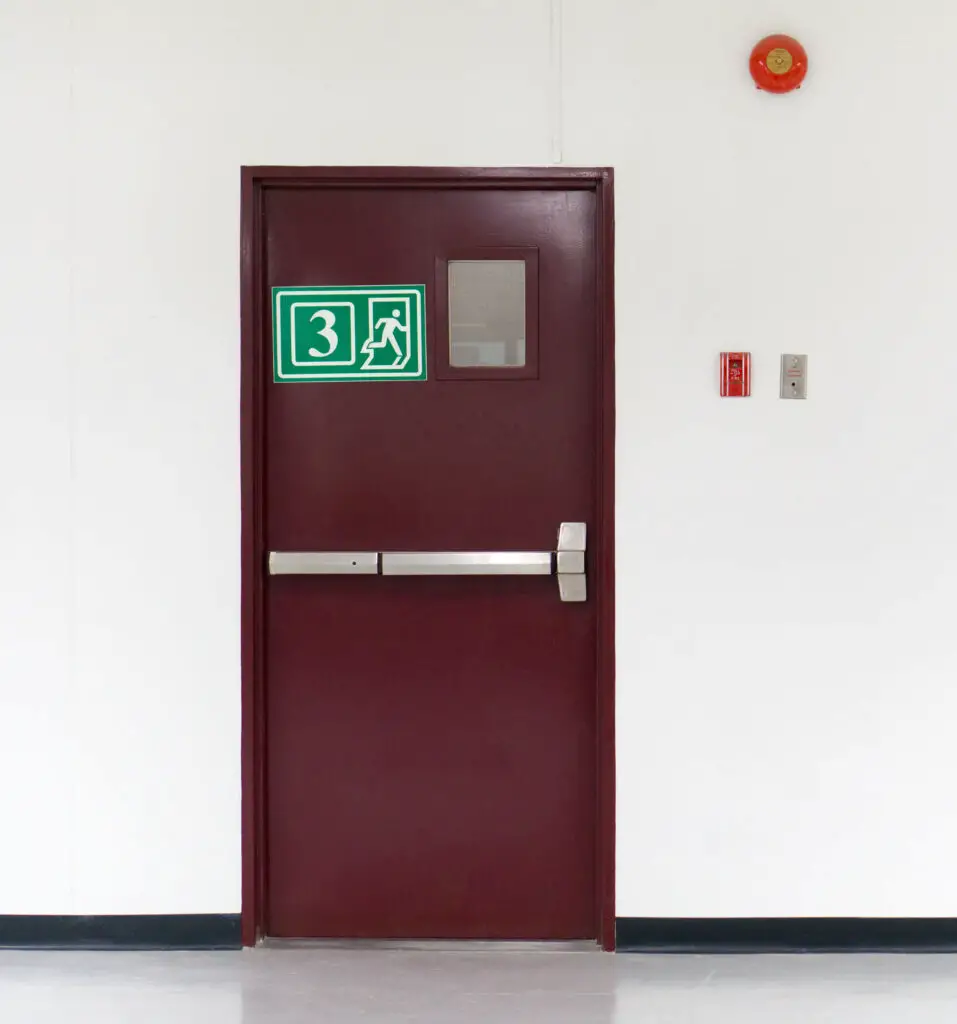
Fire-Rated doors in commercial settings require certain grades of glass for interiors and stairwells. 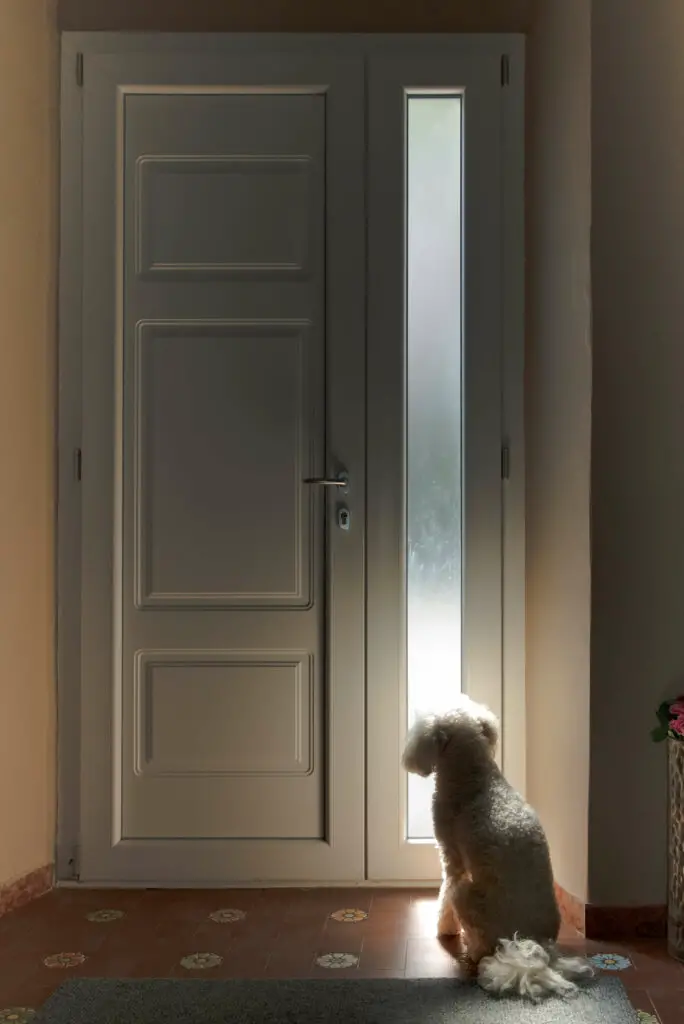
Decorative residential glass does not have the same rating requirements as commercial. A professional should assess any glass on your garage entry door.
If your garage entry door looks more like a front door, with decorative glass near the sides or top, chances are these were not installed in accordance with the residential building code. For optimal fire safety, you need to ensure that the pane of glass in your door is rated for delaying the spread of smoke and fire. If you are unsure about the glass, consult a professional or simply replace the door with one that is fire-rated.
5. Garage entry doors should not have pet doors installed in them.

It may go without saying, but sometimes, with the threat of fire far from your mind, the temptation may be to increase functionality without counting the cost. My family loves our pets – we have a cat and a dog, and I will admit, my kids and I take turns playing “dog butler” to let her outside and back in from the yard.
Pet doors can eliminate that daily chore. But adding a pet door or any kind of hole to your garage entry will compromise the integrity of the fire barrier. Your 20-minute door won’t be able to ensure that amount of burn time if the pet flap at the bottom gives the fire an immediate gateway to the hallway behind it. Give your pets direct access to the yard by choosing another place to install their exit. And if your door has any type of hole in it, it will need to be replaced.
6. Garage entry doors should have tight seals around the joints.
So far so good – your garage entry door has a solid core, spring-loaded hinges, a working handle, and functional latch, no glass, and no pet doors. Now, the last thing to check is the seals around the joints. Smoke and fumes can also be deadly and spread quickly before the flames ever penetrate the door. Ensuring that your door has some kind of weather stripping installed around the joints of the doorframe will help prevent those deadly gasses from seeping into your living area.
Weatherstripping comes in a variety of colors and types and is typically made out of foam or vinyl. While the foam is often the cheaper buy, the vinyl will last longer and may be worth investing in for less maintenance in the long run. You may also be able to purchase a door seal kit that will have standard dimensions and detailed instructions for installation.
A Few Changes are Worth the Safety
Even with all the improvements to our homes over time, fires are still deadly. Building codes have continued to improve where initial builds begin, but maintaining a house is still the responsibility of the people who live there. Life is precious. And whether you live alone, with your pets, or with an entire house full of kids, helping protect from the unexpected is worth taking an afternoon to assess and upgrade to some life-saving measures.
If you are interested in other ways to improve your garage, check out our other articles on cleaning and organization.

